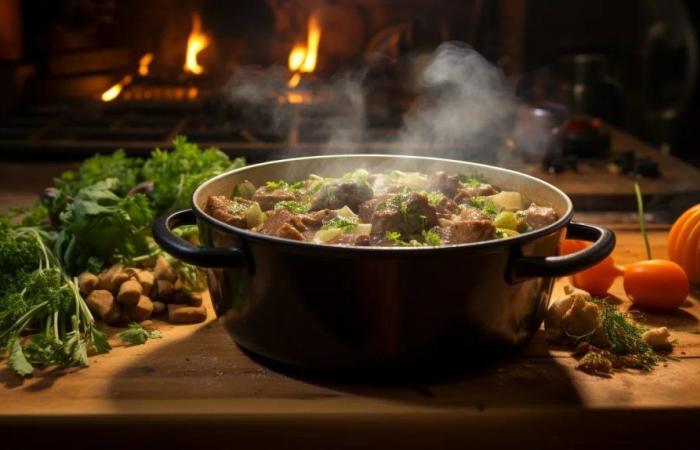The cold days in winter They usually arouse an irresistible desire for high-calorie foods and comforting. This connection between low temperatures and dietary preferences has several possible reasons, from mood even the need to maintain stable internal temperature in order to avoid infections.
Hearty stews, creamy soups, and indulgent desserts satisfy hunger and offer a emotional feeling of comfort and wellness. However, balancing this inclination with nutritious options It is crucial to maintain a healthy lifestyle throughout the winter season.
The reason behind this seasonal phenomenon may be due to the relationship between the mood during the winter days decrease in sunlight. Megan Lee, academic tutor and PhD candidate, and Jacqui Yoxall, senior lecturer in Allied Health, at Southern Cross University explained in an article in The Conversation that the digestive system communicates with the brainand by consuming foods that they call “comforting” such as pasta, chocolate and soups, they produce dopamine and serotonin. These hormones are considered “happiness” hormones because they produce a feeling of well-being.
Furthermore, the increase in glucose that the brain receives after having consumed foods high in sugar and carbohydrates also produces “an instant sensation of happiness when we feel cold, sad, tired or bored.”
Likewise, they highlight the role of evolution in eating habits, since prior to the development of technology, humans gained weight in winter, just like animals, to keep the body warmer“Thus, craving for carbohydrate- and sugar-rich foods was a protective mechanism,” they comment in the article.
In turn, the imitation as a form of learning It has an influence on nutrition throughout life. “In the context of cravings, this suggests that what our caregivers gave us in the winter as children has a surprising impact on what we choose to eat in the winter.” when we are adults”, highlight the authors.
The Cleveland Clinic recommends comfort foods, but healthy. Some root vegetables such as carrots, beets and turnips can be incorporated into the diet to obtain the necessary nutrients and, in turn, satisfy the appetite.
On the other hand, foods rich in vitamin Dsuch as shiitake mushrooms, salmon, egg yolks, red meat, and milk, can improve mood during the winter seasons.
Furthermore, they highlight the oatmeal as an extremely versatile food, to which spices of all kinds can be added to create delicious foods that do not contain excess fat, sodium or sugar. They even clarify that “oats have a high zinc content (important for proper immune function) and Soluble fiber (associated with heart health).”
The soup It is representative of cold days, since warms the body from the inside. Experts recommend making it with chicken or vegetable broth. Must include vegetables, beans or lentils to add proteins no fat and fiber.
“Both protein and fiber curb appetite by slowing digestion and controlling blood sugar levels, which can help control hunger and boost mood,” they added.
As for fruits, you should consume citrus fruits rich in vitamin C (kiwis, lemons, oranges and mangoes) for strengthen the immune system in low temperature seasons. The group of foods with this nutrient also includes broccoli and cauliflowerwhich are good additions to any meal.
The effects of low temperatures on the body are several: from vasoconstriction to keep blood warm in vital organs and away from the surface of the skin where it can escape, until muscle tremors in order to generate heat.
These actions demand a energy supply to be carried out. According to experts from the University of Valencia, “an adult in extreme cold situations can burn up to 500 calories at the time. The fat It has a large concentration of mitochondria and its function is to burn energy to give it to the body and keep your heat“This is a characteristic present in all mammals.”
The Ministry of Health of Argentina advises, meanwhile, “to maintain a healthy nutrition, with all the nutrients and energy necessary to carry out daily activities. The consumption of fresh and minimally processed foods; in addition to having four meals a day, respecting the schedule of each one if possible.”
The experts of the British Heart Foundation They also believe that meals during the winter should be healthy, although they can continue to be comforting. They recommend consuming “a hot bowl of oatmeal with some chopped or dried fruits, instead of cereals with cold milk for breakfast. Vegetable and bean soups instead of salads for lunch.” However, they comment that It’s okay to indulge from time to timeas long as a healthy diet is followed.






